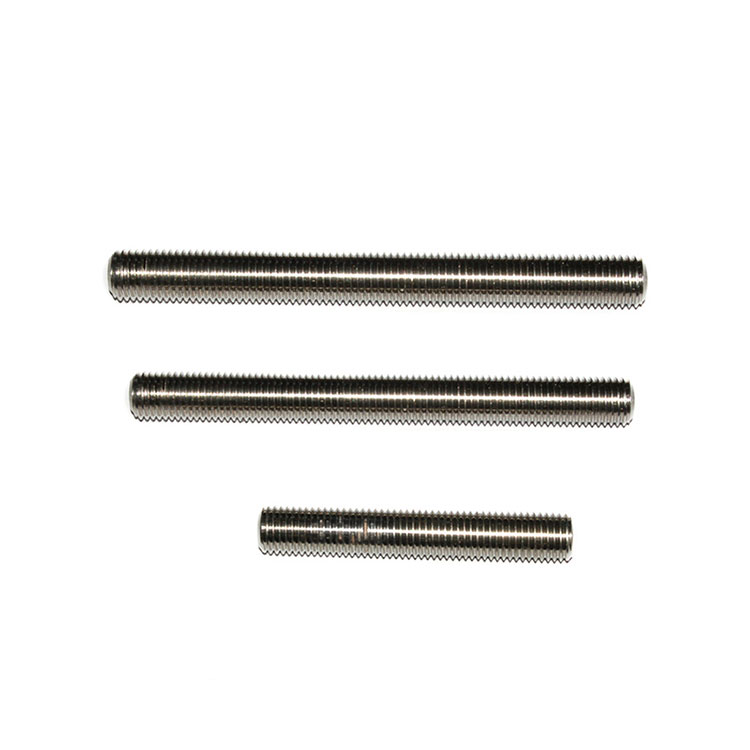What is the difference between a All Thread Stainless Steel Threaded Rod and a Half-Threaded Stainless Steel Threaded Rod?
2025-04-14
In mechanical engineering, building structures, and other industrial fields, threaded rods are an important fastener that is widely used in various connection and fixing occasions. According to the distribution of stainless steel threads, threaded rods can be divided into All Thread Stainless Steel Threaded Rod and half-threaded stainless steel threaded rods. There are significant differences between these two types of screws in terms of structure and application scenarios.
So what is the difference between All Thread Stainless Steel Threaded Rod and half-threaded stainless steel threaded rods in terms of structure and application scenarios?

Structural differences
1. All Thread Stainless Steel Threaded Rod
The entire rod body of a fully threaded stainless steel threaded rod is covered with threads, with a continuous thread structure from one end to the other. This means that the entire length of the screw can be used for fastening or connection. All Thread Stainless Steel Threaded Rod are usually used in situations where high-strength connections are required or where length adjustment is required.
2. Half-threaded stainless steel threaded rods
The rod body of a half-threaded stainless steel threaded rod is only partially covered with threads, usually leaving a smooth, unthreaded portion at one or both ends. The design of semi-threaded stainless steel threaded rod enables the threaded rod to better adapt to different connection requirements during installation, especially in situations where precise positioning or prevention of thread damage is required.
Application scenarios
1. Application of fully threaded stainless steel threaded rod
Since the entire rod body is threaded, the fully threaded stainless steel threaded rod is suitable for situations where high-strength connection or length adjustment is required. For example, in bridges, building structures, and heavy machinery and equipment, the fully threaded stainless steel threaded rod can provide stronger connection force to ensure the stability and safety of the structure. In addition, the fully threaded stainless steel threaded rod is also often used in situations where frequent disassembly and installation are required, because its entire length can be used for tightening, which is convenient for adjustment and maintenance.
2. Application of semi-threaded stainless steel threaded rod
Since part of its rod body is not threaded, the semi-threaded stainless steel threaded rod is suitable for situations where precise positioning or prevention of thread damage is required. For example, in the fields of precision machinery and equipment, electronic equipment, and automobile manufacturing, the semi-threaded stainless steel threaded rod can better adapt to complex connection requirements and ensure the accuracy and reliability of the connection. In addition, the semi-threaded stainless steel threaded rod is also often used in situations where thread wear or corrosion needs to be prevented, because its smooth part can reduce the contact area of the thread and reduce the risk of wear and corrosion.
Summary
There are significant differences between All Thread Stainless Steel Threaded Rod and Half-Threaded Stainless Steel Threaded Rod in terms of structure, application scenarios, installation methods, and mechanical properties. All Thread Stainless Steel Threaded Rod is suitable for situations where high-strength connections or length adjustment are required, while half-thread stainless steel threaded rod is suitable for situations where precise positioning or prevention of thread damage is required.


